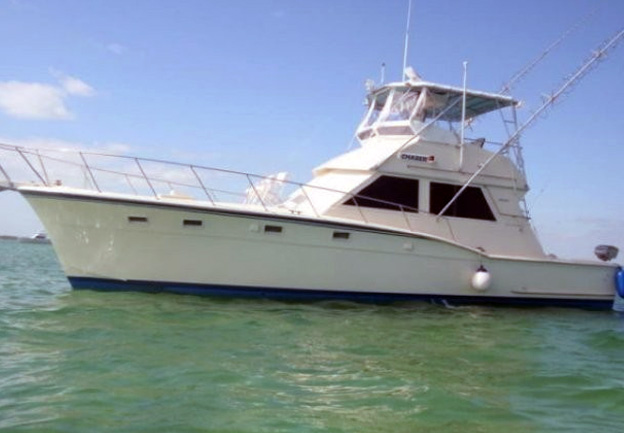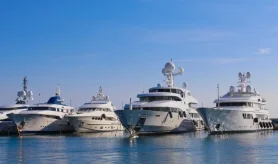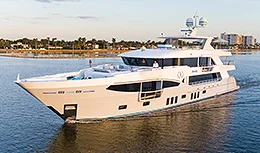- Alaskan Yachts
- Azimut Yachts
- Back Cove Yachts
- Beneteau Yachts
- Benetti Superyachts
- Bertram Yachts
- Boston Whaler
- Broward Yachts
- Buddy Davis Sportfish
- Burger Yachts
- Cabo Yachts
- Catamarans
- Carver Motoryachts
- Center Console
- Chris-Craft Yachts
- Cruisers Yachts
- DeFever Trawlers
- Dufour Sailboats
- Fairline Yachts
- Feadship Yachts
- Ferretti Yachts
- Filippetti Yachts
- Formula Yachts
- Fountaine Pajot Cats
- Grady-White
- Grand Banks Trawlers
- Hargrave Yachts
- Hatteras Yachts
- Hinckley Picnic Boats
- Horizon Yachts
- Hydra-Sports
- Intrepid Boats
- Jarrett Bay Sportfish
- Jeanneau Yachts
- Kadey-Krogen Trawlers
- Lazzara Yachts
- Lekker Boats
- Luhrs Sportfish
- Marlow Yachts
- Maritimo Yachts
- Marquis Yachts
- Mazu Yachts
- McKinna Motoryachts
- Meridian Yachts
- Midnight Express
- MJM Yachts
- Mochi Craft
- Neptunus Motoryachts
- Nordhavn Trawlers
- Nordic Tugs
- Numarine Yachts
- Ocean Alexander Yachts
- Ocean King
- Offshore Yachts
- Outer Reef
- Oyster Sailing Yachts
- Pacific Mariner Yachts
- Palmer Johnson Yachts
46 Hatteras Convertible
![]()

Source: Eston Ellis, Sea Magazine
Sportfishers come and go, but the Hatteras 46 Convertible endures
One of Hatteras Yachts’ most popular models of all time, the 46 Convertible, may not be “flashy,” but its simple, elegant lines are timeless — and its fishable, seaworthy design is a true modern classic.
Tom Neilsen and Don Beaumont, of Neilsen Beaumont Marine in San Diego, thought so much of this classic boat, they bought a well-used 1979 model and restored it to tip-top condition. Not only is it as good as new, it is better than new — thanks to the installation of contemporary electronics, controls, interior comforts and convenience options.
The boat, Hatts Off, has been making the rounds at Southern California boat shows and is a showcase for the renovation work Neilsen Beaumont shipyard can do. However, as those who restore old houses can tell you, any successful renovation project must start with a subject that has “good bones.”
Hatteras produced three series of 46s between 1974 and 1995. The first two series were built on a seakindly J.B. Hargrave-designed hull — and the last was built on a faster Hatteras-designed hull inspired by the original. The original hull’s modified-V configuration offers a deep, full-length keel and a moderate transom deadrise.
The 46 Convertible handles well in a full range of sea conditions, whether going down a swell or across a quartering sea. It maintains a dry ride and is not prone to rolling either at trolling speeds or at anchor.
“It’s a sweet-running boat,” Neilsen explained. At 41,000 pounds, it’s heavier than most newer boats of its size, which gives it a rock-solid ride.
“Hit a wake in a newer boat, and you’ll be rocking and rolling. Not in this one,” Neilsen said.
While the original hull’s deep forefoot makes for excellent handling in head seas, it slows the boat down a bit. With a pair of 450 hp Detroit Diesels, 1974-1981 versions of the boat cruise at 18 to 22 knots and consume around 32 gallons of fuel per hour.
Contemporary boats of this size may provide 30 knots top speed, but, in the West, conditions don’t often allow boaters to travel comfortably at those higher speeds. “For this region, the speed is just right,” Neilsen said.
In 1982, Hatteras strengthened the original hull with additional transverse frames, “beefed up” the sides with balsa coring and shortened the keel to improve handling and decrease the wetted surface. This “performance” version came equipped with twin 650 hp diesels for 29 knots top-end performance (and a 26 knot cruising speed) — but fuel consumption was a considerably less economical 51 gallons per hour.
In its final incarnation, the 1992-1995 version of the 46 Convertible was given a whole new, beamier, low-deadrise hull with cored sides. With twin 735 hp diesels, the boat cruised at around 25 knots; and could reach up to 28 knots top speed.
Inside Track
Sport anglers love the 46 Convertible’s big 125 square foot cockpit (measuring 9 by 11 feet) and its roomy flybridge.
Several interior layouts were available during the 46 Convertible’s years of production. A roomy two-stateroom, galley-down arrangement with two heads was the most popular. Three staterooms were also available, as was an up-galley adjoining the saloon – however, these plans made for slightly less spacious accommodations.
Abundant hanging lockers, drawers and stowage compartments are provided throughout the 46 Convertible, making for more comfortable cruises.
Another practical feature is the boat’s spacious engine compartment, which offers just-short-of-standing headroom. All switches, filters and separators are clearly labeled and all wiring is color-coded and numbered.
One Boat’s Restoration
Neilsen and Beaumont bought their 46 Convertible in 1998, and their renovation of the boat is practically a textbook case of how an old boat can be made new. The key is to pick the right boat – one with a seakindly hull that is structurally sound, with its fiberglass in good condition, Neilsen said.
“A brand-new Hatteras 50 Convertible is priced at over $1 million. But you can buy a used 46 Convertible for $250,000, restore it, and end up with a ‘like-new’ boat for half the price,” Neilsen said.
The first thing Neilsen and Beaumont did after buying their well-used 46 was go through the boat’s DC system and renew wiring connections, removing 20 years of corrosion.
The next step was to go completely through the boat – “from the through-hulls out,” Neilsen said. They pressure tested all valves, inspected all bolts and fasteners, replaced all hoses, and replaced rudder and shaft packing. They also added a bilge alarm.
After any potential problem that could cause water intrusion into the bilge was eliminated, the two concentrated their efforts on “cosmetics” and amenities.
Hatteras 46s originally came from the factory with painted hulls, instead of gelcoat. Neilsen and Beaumont repainted their 46 with linear polyurethane, changing its hull color from yellowish-white to a brilliant white. They raised the boot stripe and painted it an eye-catching blue and gold.
Next, they removed the flybridge’s old Bimini top and added a new double-tube arch. They installed a Bimini top on the arch and added downriggers at the same angle, for cleaner exterior lines.
The bridge formerly had front windows divided into three sections. They replaced the old windows with larger ones, for an updated look. At the helm, they redid the console layout to make maximum use of space. They added new, more compact electronics, which allowed them to eliminate the use of big, old-style electronic boxes overhead.
In the cockpit, the pair added a cushioned rail for more comfortable fishing and removed the lower steering console – replacing it with compact, side-mounted controls and a repeater for the boat’s autopilot, plus a bait tank with a quarter window.
Throughout the boat, they renewed the teak trim, giving it a high-gloss finish. They added a Sub-Zero refrigerator that can be replaced with a freezer that is the same size, for Mexico sportfishing cruises.
The 20-year-old interior got a makeover, with new fabrics, a new stereo system and new faucets in the galley and heads. Eventually, the galley will be remodeled, too.
Final additions include a new swimstep, an ozone machine to provide constantly fresh air aboard (eliminating any possibility of head smells), a new anchor and windlass, and an anchor alarm and depth sounder repeater in the master stateroom, so that the skipper can sleep better while at anchor off Catalina.
One thing that proved especially helpful during the renovation project was the fact that Hatteras maintains complete records on every boat it has produced. If you know your hull number, you can find out exactly what materials and parts went into your specific vessel. And unlike many builders, Hatteras can supply parts for even its oldest boats – so finding the right hatch seals and gaskets is easy, not a scavenger hunt.
When you’re considering a boat to restore, it helps to know that parts and advice will both be available when you need them. Thanks to Hatteras’ high level of customer support, buyers of a classic 46 Convertible can be confident they can keep cruising for years to come.



